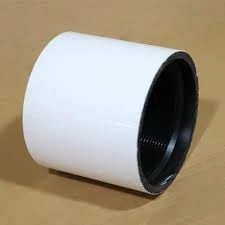- Afrikaans
- Albanian
- Amharic
- Arabic
- Armenian
- Azerbaijani
- Basque
- Belarusian
- Bengali
- Bosnian
- Bulgarian
- Catalan
- Cebuano
- Corsican
- Croatian
- Czech
- Danish
- Dutch
- English
- Esperanto
- Estonian
- Finnish
- French
- Frisian
- Galician
- Georgian
- German
- Greek
- Gujarati
- Haitian Creole
- hausa
- hawaiian
- Hebrew
- Hindi
- Miao
- Hungarian
- Icelandic
- igbo
- Indonesian
- irish
- Italian
- Japanese
- Javanese
- Kannada
- kazakh
- Khmer
- Rwandese
- Korean
- Kurdish
- Kyrgyz
- Lao
- Latin
- Latvian
- Lithuanian
- Luxembourgish
- Macedonian
- Malgashi
- Malay
- Malayalam
- Maltese
- Maori
- Marathi
- Mongolian
- Myanmar
- Nepali
- Norwegian
- Norwegian
- Occitan
- Pashto
- Persian
- Polish
- Portuguese
- Punjabi
- Romanian
- Russian
- Samoan
- Scottish Gaelic
- Serbian
- Sesotho
- Shona
- Sindhi
- Sinhala
- Slovak
- Slovenian
- Somali
- Spanish
- Sundanese
- Swahili
- Swedish
- Tagalog
- Tajik
- Tamil
- Tatar
- Telugu
- Thai
- Turkish
- Turkmen
- Ukrainian
- Urdu
- Uighur
- Uzbek
- Vietnamese
- Welsh
- Bantu
- Yiddish
- Yoruba
- Zulu
Durable Stainless Steel Coupling for Reliable Connections in Various Applications and Industries
Understanding Stainless Steel Couplings
Stainless steel couplings are essential components in various industrial applications, providing reliable connections between pipes and other hydraulic systems. Available in multiple configurations and sizes, these couplings are particularly valued for their durability, resistance to corrosion, and ability to maintain integrity under high-pressure conditions. This article delves into the properties, types, and applications of stainless steel couplings, with a focus on the crucial role they play in modern engineering.
Properties of Stainless Steel Couplings
The primary material for stainless steel couplings is, as the name suggests, stainless steel, which is an alloy primarily consisting of iron, carbon, and chromium. The addition of chromium enhances the steel's resistance to corrosion and oxidation, making it ideal for applications where moisture or corrosive substances may be present. This inherent strength and resistance allow stainless steel couplings to function effectively in extreme environments—be it high temperatures, exposure to chemicals, or marine applications.
Additionally, stainless steel couplings exhibit excellent mechanical properties, which include high tensile strength and robustness. These attributes are crucial, especially in situations where mechanical stress and pressure variations are prominent. Their ability to withstand such conditions ensures the longevity and reliability of the systems they are part of.
Types of Stainless Steel Couplings
Stainless steel couplings come in several types, each suited to different applications
1. Rigid Couplings Designed to connect two shafts or pipes without any flexibility. They are ideal for applications requiring perfect alignment where movement is not necessary.
2. Flexible Couplings These allow for certain degrees of movement, accommodating misalignment, thermal expansion, and vibration. Their flexibility is critical in dynamic systems where movement is expected.
stainless steel coupling 1 2

3. Clamp Couplings Often utilized in plumbing and HVAC systems, they secure pipes or tubes at their joints. The design enables quick installation and disassembly, making maintenance tasks easier.
4. Lug Couplings These are designed for quick assembly and disassembly, typically used in situations where frequent maintenance is necessary. They offer versatility and ease of assembly.
5. Universal Couplings Used to connect non-aligned shafts, these couplings are built to accommodate various angles between connected components, ensuring efficient transfer of motion.
Applications of Stainless Steel Couplings
Stainless steel couplings are utilized across multiple industries thanks to their versatile properties. In the oil and gas sector, they are crucial for connecting pipelines that transport hydrocarbons under high pressure. Furthermore, the food and beverage industry relies on stainless steel couplings to maintain hygiene standards while facilitating the transfer of liquids.
In construction and manufacturing, these couplings are indispensable in plumbing and water systems, ensuring fluid integrity. Similarly, stainless steel couplings are extensively used in automotive applications, connecting various components in vehicles to enhance performance and safety.
Conclusion
In summary, stainless steel couplings are vital components in modern engineering, significantly contributing to the functionality and safety of diverse systems. Their unique properties—resistance to corrosion, high tensile strength, and adaptability—make them suitable for a variety of applications across different industries. Understanding the types and roles of these couplings can help engineers and technicians select the appropriate solutions for their specific needs, ultimately driving efficiency and reliability in their respective fields. As technology progresses and new materials emerge, the fundamental importance of stainless steel couplings will undoubtedly continue to play a critical role in future engineering designs.
-
Tubing Pup Joints: Essential Components for Oil and Gas OperationsNewsJul.10,2025
-
Pup Joints: Essential Components for Reliable Drilling OperationsNewsJul.10,2025
-
Pipe Couplings: Connecting Your World EfficientlyNewsJul.10,2025
-
Mastering Oilfield Operations with Quality Tubing and CasingNewsJul.10,2025
-
High-Quality Casing Couplings for Every NeedNewsJul.10,2025
-
Boost Your Drilling Efficiency with Premium Crossover Tools & Seating NipplesNewsJul.10,2025







